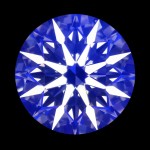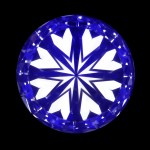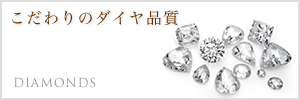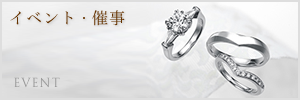Diamond 4C’s | Clarity.
By Mark Hiroshi Willis (GIA G.G.)
Diamond Clarity.
When distinguishing a stone’s clarity, professionals will use a 10X loupe to determine the grade. The natural birthmarks in a stone are inclusions (internal) and blemishes (external).
FL (Flawless): No inclusions or blemishes when a professional looks at the stone with a 10X loupe. This grade is basically for collectors who like to keep the stone in a box since it is very possible that the stone can get scratched during the setting process or through normal wear, and then the grade will drop to Internally Flawless (IF).
IF (Internally Flawless): There are no inclusions, but a blemish can be found by a professional using a 10X loupe.
VVS-1 and VVS-2 (Very, Very Slightly Included): The normal person would need a microscope to see the inclusions (and probably a very high magnification). Even then, it would be very difficult to distinguish between an actual inclusion and dust. VVS stones are extremely rare and priced accordingly.
VS-1 and VS-2 (Very Slightly Included): The normal person would have some difficulty finding the inclusions with a 10X loupe and they would probably need a professional to point them out. However, once we reach this grade, the inclusions size and/or quantity grow. Therefore, the chances of having a high VS-2 or a low or weak VS-2 also grows (a low VS-2 may easily be seen with a 10X loupe).
SI-1 and SI-2 (Slightly Included): The normal person will probably be able to see the inclusions with a 10X loupe, but the inclusions should not be visible to the naked eye. SI class is very similar to VS in that the size and number of inclusions have grown. Therefore, we face the same problem of two stones with the same exact grade, but totally different value. The only sure way of getting a nice stone is to go to a reputable jeweler that has a trained gemologist who can show you the actual inclusions.
I-1, I-2, and I-3 (Included): The inclusions begin to be visible with the naked eye and can affect the stones overall luster and strength. Here we will find a huge spread between the different ranges and this will greatly affect the price. As long as the stones are structurally strong, look for the luster in the stones.
Key Points:
• In Japan, the typical bridal diamond market starts at the VS range, however SI-1 stones have now worked their way into the mix.
• Unless you are carrying a loupe or unless you tell someone, most people will never know the clarity grade of your stone.
• The differences between the 1’s and 2’s of the above grades are usually the number of inclusions and/or their locations.
• There can sometimes be quite a range in one clarity grade, therefore dealing with a reputable and trusted source will be your only insurance on getting the best stone.
• Diamonds attract a lot of dust, dirt, body oils, etc… Therefore, your once shiny stone can easily become hazy or blurry by just touching the piece or washing your hands (soap and/or hand lotion residue can easily stay attached to the stone).
• Extra Precautions 1: Always view the diamond under various light sources.
• Extra Precautions 2: Always ask to view the diamond with a 10X loupe or microscope.
• Extra Precautions 3: Ask the sales clerk to show you where the inclusions are (if they can).
For further information, contact us at: info@diamonds.co.jp
Located in Tokyo, Japan we specialize in 1 carat and up, diamond engagement rings.
We also carry a regular line of wedding bands, eternity rings, diamond earrings, diamond necklaces, and unique diamond accessories.














